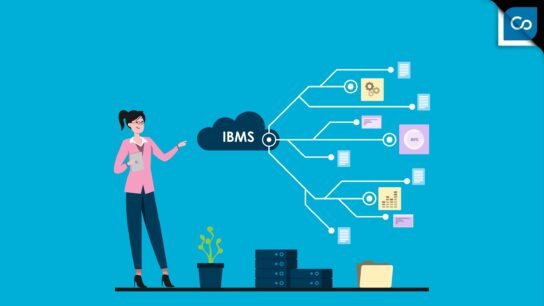Modern education faces unprecedented challenges as educators strive to engage increasingly diverse student populations while meeting rigorous academic standards. The solution lies not in choosing between traditional and innovative methods but in creating powerful synergies that leverage the best of both approaches. A forward-thinking teacher today understands that incorporating kids animated shows and educational animation into instruction creates learning experiences that are both academically rigorous and genuinely engaging for students across all learning styles and ability levels.
The scientific foundation supporting animation in education continues growing stronger through peer-reviewed research and real-world implementation studies. Data from comprehensive educational research demonstrates that teachers employing diverse instructional strategies, including animated content, achieve significantly better student outcomes than those relying solely on traditional methods. This evidence-based approach to educational innovation ensures that animated content serves genuine pedagogical purposes rather than functioning as mere entertainment.
Transforming Abstract Concepts into Concrete Understanding
One of animation’s greatest educational strengths lies in its ability to make abstract concepts tangible and understandable. Complex mathematical relationships, scientific processes, and theoretical frameworks that challenge students when presented through traditional methods become accessible through carefully designed animated explanations. This transformation proves particularly valuable in STEM education, where abstract thinking skills often determine student success.
The visual nature of animation helps students build mental models of complex systems and processes. When students watch animated demonstrations of molecular interactions, mathematical transformations, or historical events, they develop deeper conceptual understanding that supports long-term retention and application. This visual scaffolding proves especially beneficial for students who struggle with traditional text-based learning materials.
Research-Backed Performance Improvements
Quantitative research provides compelling evidence for animation’s educational effectiveness across multiple subject areas. Studies analyzing student performance data reveal consistent improvements when animated content supplements traditional instruction. Mathematics performance shows particularly dramatic gains, with students demonstrating 24.6% better outcomes when learning through animation-enhanced instruction compared to traditional methods alone.
Science education benefits even more significantly from animated content integration, with research documenting 28.1% improvement in student understanding when visual media supplements traditional instruction. These improvements reflect animation’s unique ability to illustrate scientific processes that occur at scales or timeframes that make direct observation impossible in traditional classroom settings.
Creating Inclusive Learning Environments
Educational animation serves as a powerful tool for creating inclusive classrooms that accommodate diverse learning needs and preferences. Students with learning disabilities often find animated explanations more accessible than traditional text-based materials. Visual learners benefit from rich imagery and movement, while auditory learners engage with narration and sound effects that accompany animated content.
The multi-sensory nature of animated learning materials ensures that students with different learning styles can access the same educational content through their preferred modalities. This inclusivity reduces educational barriers and creates opportunities for all students to succeed, regardless of their individual learning challenges or preferences.
Professional Growth and Development
Teachers who embrace animated content in their instruction often experience renewed enthusiasm for their profession and improved job satisfaction. The positive student responses to animated learning materials create more engaging classroom environments that benefit both students and educators. Professional development opportunities in animation integration help teachers maximize these benefits while maintaining educational rigor.
Collaboration between teachers using animated content often leads to innovative curriculum development and resource sharing. Educators discover new ways to present challenging concepts and develop creative assessment strategies that align with animation-enhanced instruction. This professional growth contributes to overall school improvement and educational innovation.
Technology Integration and Infrastructure
Successful implementation of animated educational content requires thoughtful technology planning and adequate infrastructure support. Schools investing in reliable internet connections, interactive displays, and mobile devices create environments where animated content can be seamlessly integrated into daily instruction. This technological foundation enables teachers to access extensive libraries of educational animation and customize content to meet specific learning objectives.
The user satisfaction rates for animation-based learning systems reach 94%, with system reliability maintaining an impressive 0.2% error rate. These statistics demonstrate that when properly implemented, animated educational technology provides reliable and effective learning experiences that students and teachers can depend on for consistent educational outcomes.
Economic Impact and Market Growth
The educational animation market’s projected growth to $400 billion by 2025 reflects increasing recognition of animation’s educational value and growing institutional investment in visual learning technologies. This market expansion creates opportunities for educational content development, teacher training programs, and technology infrastructure improvements that benefit entire educational systems.
Schools that invest in animated educational content often see positive returns through improved standardized test scores, increased student engagement, and enhanced teacher effectiveness. These measurable outcomes justify the initial investment and support continued expansion of animation-based learning programs.
Building Sustainable Educational Programs
Long-term success in animation integration requires comprehensive planning that addresses content acquisition, teacher training, technology maintenance, and ongoing assessment of educational outcomes. The most successful programs create sustainable frameworks that support continuous improvement and adaptation to changing educational needs and technological capabilities.
Collaboration between educators, technology specialists, curriculum designers, and content creators ensures that animated educational materials serve authentic learning purposes while maintaining academic standards. This collaborative approach maximizes the educational value of animation while preserving the essential human elements that make teaching effective.
The partnership between dedicated teachers and innovative animated content represents a fundamental evolution in educational practice. When educators thoughtfully integrate visual media into their instruction, they create learning experiences that engage multiple senses, accommodate diverse learning styles, and produce measurably better academic outcomes. This synergy between human expertise and technological innovation prepares students for success in an increasingly visual and digital world while honoring the irreplaceable value of skilled, caring educators who guide the learning process.





